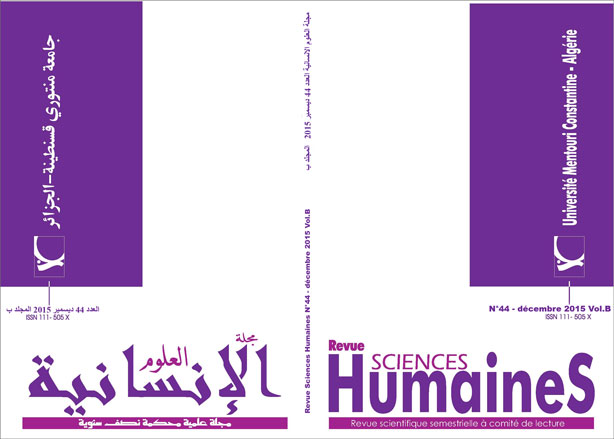The Grammar of Spoken Language or the Grammar of Standard Language?
الكلمات المفتاحية:
Grammar، Spoken Language، Standard Languageالملخص
In the light of the fast-developing technology which is encouraging spontaneous global communication, conversational skills have become an inestimable asset. Natural conversation calls for the use of certain interactive and interpersonal structures which only spoken grammar (the grammar of conversation) can offer. However, almost all accounts of English grammar have been based, to a very high extent, on the standard version of the language. Through this paper, we set out to demonstrate the significant contribution of spoken grammar to natural conversation. Light is shed on the distinct nature of spoken grammar, as opposed to the nature of standard grammar, with a special focus on the interactive and interpersonal aspects of spoken grammar. The study aims at investigating the extent to which spoken grammar is used by students and the viability of teaching spoken grammar in order to make students’ conversational English more natural. It will also provide information about whether spoken grammar is taught, the way it is presented and the teachers’ views about the usefulness of integrating aspects of spoken grammar into the teaching of speaking.
التنزيلات
المراجع
- Carter, R., & McCarthy, M. (2006). Cambridge Grammar of English.Cambridge: Cambridge University Press.
- Carter, R., Hughes, A., & McCarthy, M. (2000). Exploring Grammar in Context. Cambridge: Cambridge University Press.
- Cook, G. (1998). The Uses of Reality. ELT Journal, 52(1), 57-63.
- Crystal, D. (2003). The Cambridge Encyclopedia of the English Language (2nd ed.). Cambridge: Cambridge University Press.
- McCarthy, M. (1998). Spoken Language and Applied Linguistics. Cambridge: Cambridge University Press.
- McCarthy, M., & Carter, R. (1995). Spoken Grammar: What Is It and How Can We Teach It? ELT Journal, 49(3), 207-218.
- McCarthy, M., & Carter, R. (2002). Ten Criteria for a Spoken Grammar. In E. Hinkel & S. Fotos (Eds.), New Perspectives on Grammar Teaching in Second Language Classrooms (pp. 51-75). London: Lawrence Erlbaum Associates.
- Murphy, R. (2004). English Grammar in Use (3rd ed.). Cambridge: Cambridge University Press.
- Paterson, K. (2011). Preparing to Teach Spoken Grammar. Westminster: Westminster University.
- Rings, L. (1992). Authentic Spoken Texts as Examples of Language Variation: Grammatical, Situational and Cultural Teaching Models. In International Review of Applied Linguistics, 30(1): 21-33.
- Rühlemann, C. (2008). A Register Approach to Teaching Conversation: Farewell to Standard English? In Applied Linguistics, 29(4). Oxford: Oxford University Press.
- Seeger, I. (2010). Spoken Grammar and a Register Approach: Approximating to Natural Speech in the Communicative Language Classroom. Birmingham University.
- Thornbury, S. (1999). How to Teach Grammar. Harlow: Pearson Education Ltd.
- Thornbury, S. (2005). How to Teach Speaking. Harlow: Pearson Education Ltd.
- Timmis, I. (2005). Towards a Framework for Teaching Spoken Grammar. ELT Journal, 59(2), 117-124.












